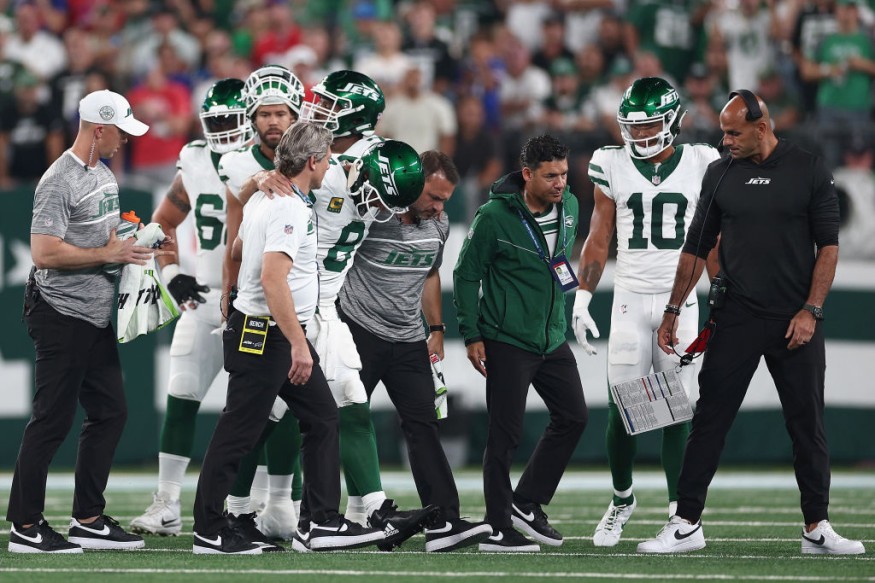
An Achilles tendon rupture, once deemed to be a career ender, no longer strikes the same fear into professional athletes. Advancements in sports medicine have developed ways to properly treat an Achilles injury with the ability to return to high level athletics within a reasonable recovery time. Like an ACL tear, the Achilles tear is no longer lethal to an athlete's career; but it still demands a lot of careful rehabbing and patience.
About the Achilles Tendon
The Achilles tendon is a thick tendon, consisting of 90% collagen, connecting the gastrocnemius and soleus muscles in the calf to an insertion point at the calcaneus (heel bone). The Achilles is the strongest tendon in the human body as it allows for us to run, jump and push off our feet. Given the functions it allows, a healthy Achilles tendon is very much needed for a professional athlete.
Causes and Symptoms of an Achilles Tendon Rupture
The most common location of an Achilles tendon rupture is where the tendon joins with the calf muscles and can occur from the back of the ankle to the calf or heel. Lack of flexibility is usually the cause of an Achilles injury, stretching the lower point of the leg can help prevent serious injury. Overusing the Achilles can cause Achilles Tendonitis, and in more severe cases can cause a complete rupture of the tendon. Sudden movement can bring forth this injury, followed by sudden pain and swelling in the back of the ankle. Popping in the area, inability to push off foot, and bend foot forward are symptoms of an Achilles tendon rupture; usually accompanied by an MRI from a physician to confirm the tear.
Sports Medicine Treatments to an Achilles Tear
An Achilles tear must be treated as soon as possible inorder for the person to be able to regain full strength in their leg. The healing time for an Achilles injury is longer than most other leg injuries because there is a lower blood supply in the area of the tear. Surgery involves the reconnection of the tendons at the site of the rupture. Style of surgery usually depends on the location of the tear. Surgeons in some cases can use a graft from another tendon in your body as a way to reconstruct the tendon.
Although surgery is recommended, if the Achilles tendon rupture is diagnosed within 24 hours, the patient can treat the tear without surgery. Treatment without surgery does run a higher risk to re-tear the Achilles, but a lower risk to possible infection or skin breakdown. If going the non-surgical route; RICE (Rest, Ice, Compression, Elevation), plasma injection, shockwave therapy, and even orthotics can help to alleviate pain and stress of the Achilles injury, but still do hold a higher risk to re-rupturing the Achilles tendon.
Recovery Time For An Achilles Tendon Rupture
The recovery time to return to activities from an Achilles tendon rupture is roughly 6-9 months. The first 2-4 weeks consist of being immobile with no weight-bearing along with 8-10 weeks in a cast/boot/brace. Add about 4-6 months of physical therapy with gradual increase in weight-bearing as tolerated.
Age can play a factor in Achilles tears as 75% of people older than 30 are more susceptible to Achilles injuries. Different types of operations offer similar recovery times to an Anchilles tendon rupture. Most notable style of surgery as of recently is the SpeedBridge surgery, being pushed by NFL Quarterback Aaron Rodgers. This surgery promotes a technique that anchors the tendon to the heel allowing for a more aggressive approach to physical therapy, speeding up recovery and return time.
© Copyright 2025 Sports World News, All rights reserved. Do not reproduce without permission.










